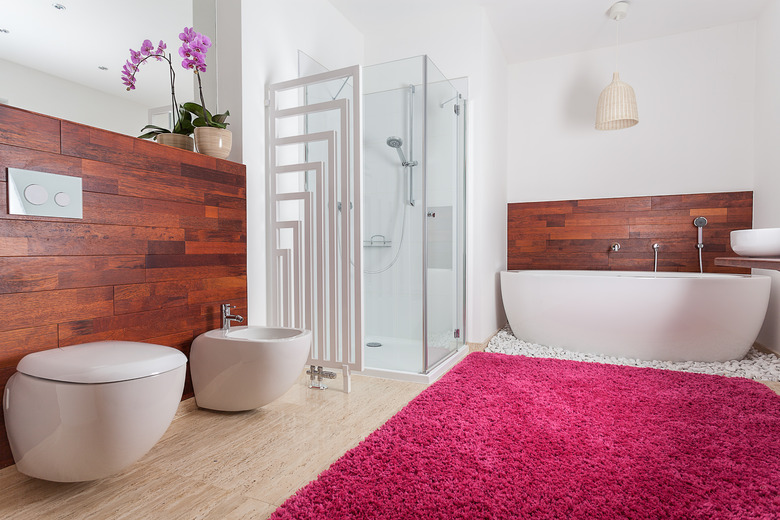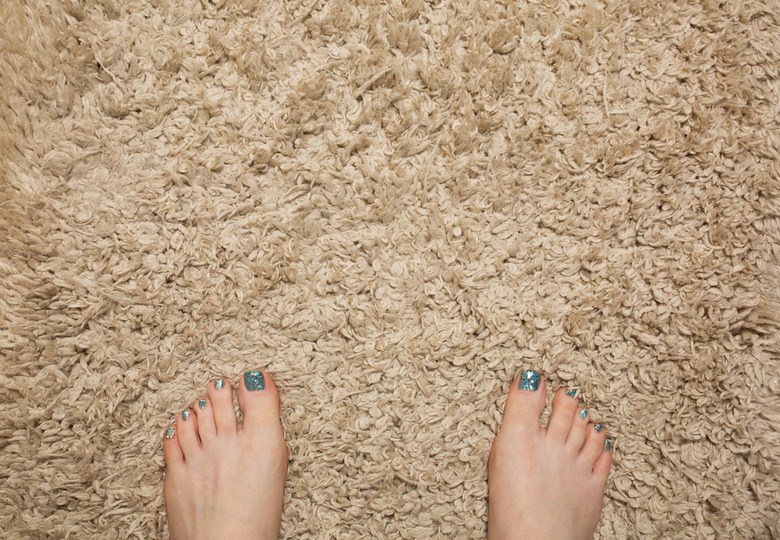Carpets In The Bathroom: How To Make It Work
So, your new house or apartment is absolutely perfect except for the bathroom carpeting. Carpeting the bathroom may seem odd to Americans, but British homeowners do it quite often. There are two things you can learn from that fact: One, you would likely experience some culture shock if you moved to England, and two, there are clearly ways to live with the situation. When removing the carpet isn't an option, there are ways to cope with a carpeted bathroom.
The Good and the Bad
Many designers frown upon putting carpet in the bathroom and for good reason. Wet carpet is prone to mold and mildew, which often form under the carpet where you can't see it. Carpet can also stain when makeup, bleach and other common bathroom substances get dropped onto it. In the event of a bathroom flood, carpet will soak up the water, making it harder to determine where the leak came from and ruining itself in the process.
Just how nasty can bathroom carpet get? According to Trade Winds Imports, the International Building Code prohibits carpet in commercial bathrooms. It doesn't do so in homes, however, so you can have a carpeted bathroom if you really want one, and some people do.
Although bathroom carpeting does have its downsides, some people love it. It's much warmer on bare feet than tile or wood, and it doesn't get slippery when it's wet like many materials can. As such, some are willing to work around carpet's drawbacks.
Bathroom Carpet Care Tips
When dealing with bathroom carpet, buying bath mats is a top priority. Laying rubber-backed bath mats over the carpet adds a layer of protection for the carpet underneath. If your little ones splash bathwater onto the floor or the toilet overflows, use a wet vac to suck up as much water as you can as quickly as you can. Open some windows and turn on your bathroom vent fan to help further dry the carpet.
Speaking of bathroom fans, make sure you have a good one. A high-quality fan pulls a lot of moist air outside and away from your carpet, leaving less moisture in the room for the carpet to absorb.
Like other carpets, bathroom carpet needs to be vacuumed about once a week to stay clean. Because the bathroom can be a germy place, it's also a good idea to shampoo the carpet every one to two years with a water-extracting cleaner. Don't use a steam cleaner, as these can damage carpet fibers and make some stains worse.
Choosing the Right Bathroom Carpeting
If you're remodeling your bathroom and have decided that the pros of carpet outweigh its cons, there are some steps you can take to make your carpet last longer and work better in the bathroom. Consider choosing carpet made for outdoor use, as these carpets resist water well and dry quickly. You may also opt to install carpet tiles rather than going with traditional wall-to-wall carpeting. Tiles allow you to easily remove and replace damaged or wet areas of the carpet without redoing the entire room.
Low pile works much better than high pile in the bathroom. Modernize also recommends going with loop pile carpets rather than more plush alternatives, which tend to look beat down and worn much more quickly. Synthetic fibers dry quicker and work better in bathrooms than many natural fibers. This is especially true of wool, which acts as a sponge and should never find its way onto a bathroom floor.
Before you lay a bathroom carpet, make sure you protect your subfloor. One way to do it is by installing wax-impregnated oriented strandboard that will resist water. You can also apply a waterproofing product to your subfloor to protect it. When applying waterproofing to a wooden subfloor, make sure you properly sand and prep the surface according to the instructions on your waterproofing product.

